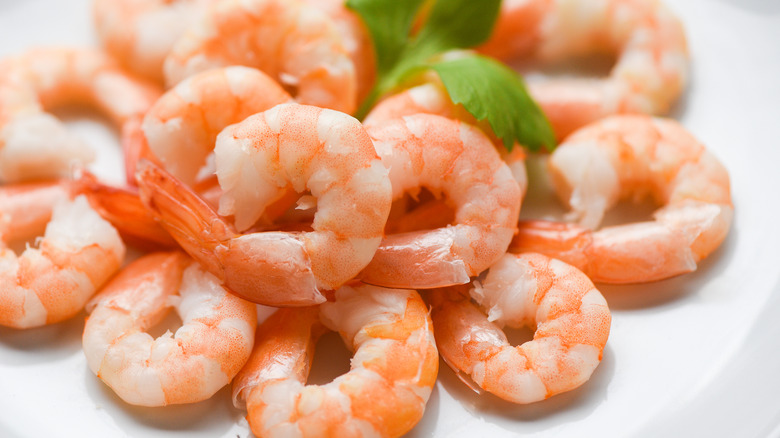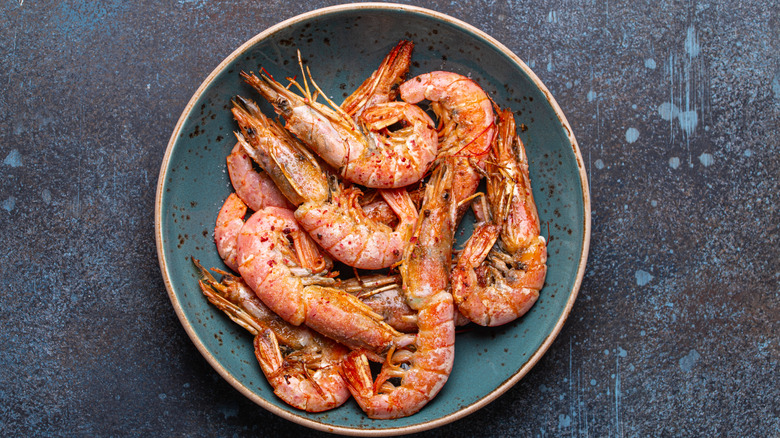The Real Reason Shrimp Change Color When Cooked
Shrimp are commonly known as "the fruit of the sea," and for good reason! As Bubba Gump would explain for hours on end, shrimp is a popular type of seafood that plays a starring role in an endless number of delectable dishes from around the world, including tacos, gumbo, ceviche, shrimp cocktail, and tons more. Shrimp offers a pleasant, semi-sweet, umami flavor and a tender, firm mouthfeel that makes it a go-to ingredient for seafood novices and superfans alike.
If you've ever cooked your own shrimp-based meal at home, you've likely noticed that the pieces of shrimp undergo a massive color change, starting from a translucent, light bluish-gray and rubbery texture when raw and morphing into a bright pink hue and succulent consistency when fully cooked. No, it isn't your eyes playing tricks on you! There's actually a fascinating — and necessary — chemical reaction happening that makes freshly cooked shrimp all the more appealing.
How and why do shrimp turn pink when cooked?
In order to understand this extraordinary color and texture change, it's important to know a bit about the anatomy of crustaceans, so we're throwing a mini chemistry lesson your way. Basically, shrimp and many other invertebrates are encased in an exoskeleton, which is the rigid external shield that provides bodily support and organic protection, similar to what a human's endoskeleton does (via Lumen). When shrimp are boiled in water or placed in a scalding hot environment like a grill or oven, the crustacyanin protein chains on their surface loosen up, revealing a pinkish-red exoskeleton pigment called astaxanthin, according to HuffPost. This is the same process that gives salmon and lobsters their beautiful red appearance and meaty taste when cooked.
Speaking of pink... Did you know flamingos get their iconic pink plumage from eating — you guessed it — shrimp? Though they obviously don't cook shrimp before eating it, their bodies metabolize the carotenoids found in the microscopic algae that shrimp consume, giving their feathers a rosy shade. Science is incredible, and clearly so are shrimp!

